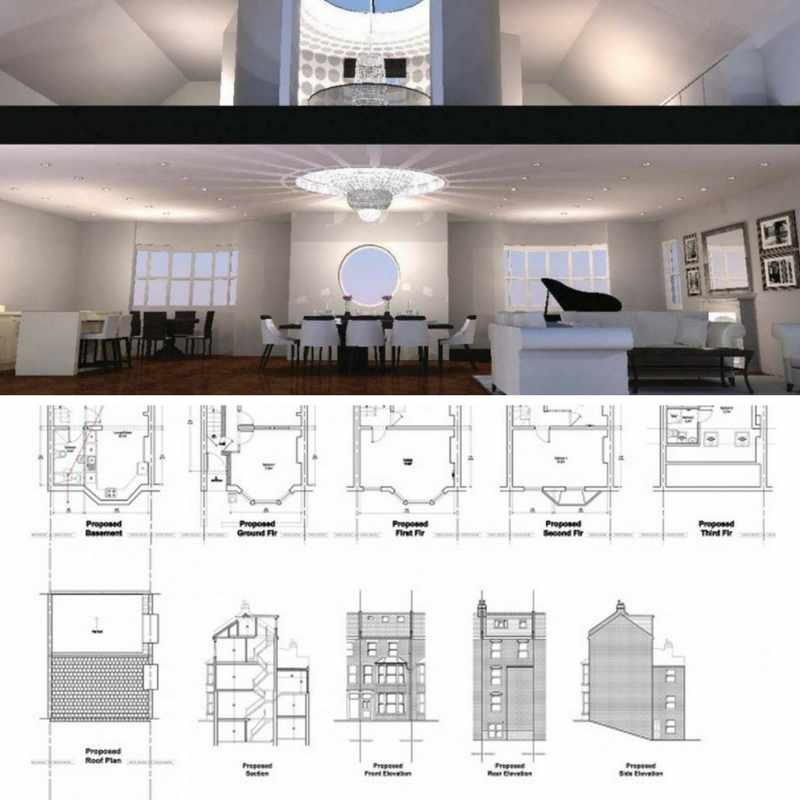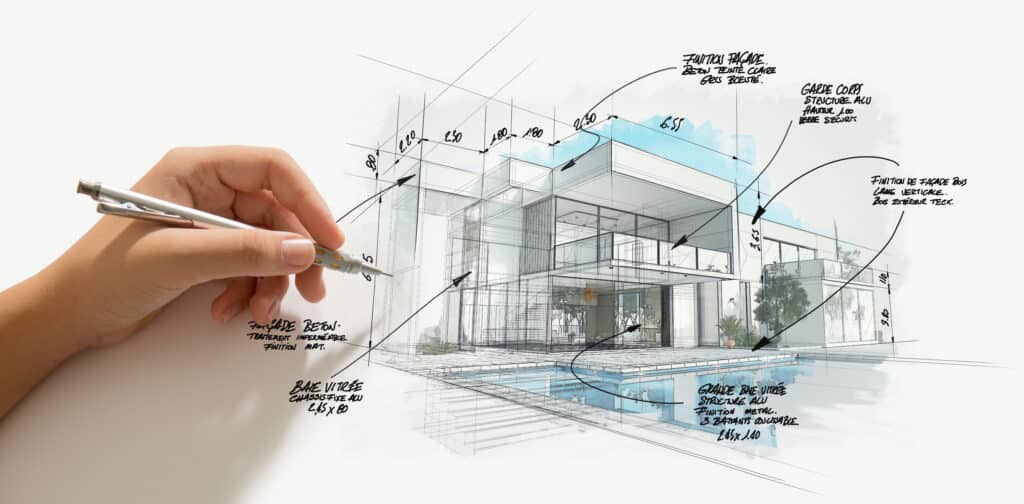Taking Full Advantage Of Visual Allure: The Harmony In Between Interior Design and Home Architect Strategies
Understanding the subtle interaction in between interior decoration and home style can dramatically elevate the aesthetic appeal of a home. This marriage of style techniques entails a thoughtful integration of architectural components with indoor layouts, and a competent application of concepts such as balance, comparison, and rhythm. As we discover this synergy, we will reveal means to create functional and aesthetically striking environments that not just reflect individual style, however also adapt to the vibrant demands of contemporary living.
Understanding the Essentials: Defining Interior Design and Home Architecture
Interior layout and home style, typically intertwined, stand for the architectural and visual elements of our living rooms. Interior Design is a complex discipline that includes producing practical, safe, and aesthetically pleasing areas inside a building. It consists of aspects such as furnishings setup, color coordination, and accessory option. On the various other hand, home design mainly concentrates on the solid framework of a building. It entails creating a practical and visually pleasing structure that stands the test of time. It incorporates aspects such as space sustainability, preparation, and building. Both areas require a deep understanding of human behavior, society, and psychology. Each plays a crucial function in shaping our living environments, adding to our overall comfort, productivity, and wellness.
The Harmony Described: How Interior Decoration and Home Design Intersect
Comprehending the harmony in between interior decoration and home architecture can open a world of creativity and capability. When reviewing this intersection, the impact of architecture on interiors is a critical element to consider. This conversation will concentrate on the unifying style principles that mix these 2 fields into an unified whole
Unifying Layout Concepts
While it may appear that interior decoration and home design are 2 distinctive disciplines, they are in fact deeply interconnected, developing a harmony that is vital for producing unified space. Unifying style concepts are the columns that facilitate this synergy. The principles include balance, rhythm, comparison, emphasis, and harmony. These aspects integrate to supply a natural visual appeal. Equilibrium creates a feeling of security, rhythm gives a sense of movement, consistency ensures unity, comparison sparks rate of interest, and emphasis accentuates crucial aspects. The strategic application of these principles enables a smooth mix of visual appeals and feature, boosting the general experience of the room. Fundamentally, these concepts offer as the bridge, uniting interior decoration and architectural methods.
Building Impact on Interiors
When one thinks about the architectural impact on interiors,The intertwining of interior design and design ends up being also more obvious. Building elements are intrinsic to a room's performance and looks, forming the design from the onset. Columns, stairs, arches or beam of lights, for example, serve both attractive and architectural purposes. They can split spaces, develop focal factors or imbue a room with a specific vibe. Factor to consider of light, percentage, and appearance additionally originate from architectural influences. Eventually, style molds the canvas whereupon interior developers work. Their harmony is therefore indisputable: architecture develops the structure, which interior decoration improves with decoration, color, and texture. This symbiotic connection makes sure an unified balance in between feature and charm, enhancing the aesthetic allure of any kind of room.
Trick Concepts in Integrating Interior Design and Home Design
Striking a balance between capability and looks is a fundamental element of integrating interior decoration and home architecture. A similarly important concept is the integration of sustainable design to develop energy-efficient and eco-friendly homes. Understanding and exploring various architectural styles can additionally play a vital duty in achieving a harmonious design. Luxury home architect.

Balancing Functionality and Visual Appeal
Balancing capability and appearances in indoor layout and home style emerges as among the critical principles to think about. This delicate stability needs a meticulous mix of practicality and charm, intending to create areas that are not just visually pleasing but additionally offer their intended objective effectively. Appearance uplifts the state of mind and influences the perception of room, whereas performance makes sure usability and comfort. Key to this equilibrium is a thoughtful choice of components such as structure, shade, and lighting, which need to complement each various other while offering their specific duties. Just as important is the efficient setup of click over here the space, with a well-planned design adding substantially to the synergy in between capability and aesthetic appeals. This harmonious mix inevitably enhances the top quality of life for the occupants.
Lasting Layout Integration
In preserving the equilibrium in between performance and aesthetic appeals, one must also consider the integration of lasting style concepts. This method not just boosts the visual appeal of an area yet additionally guarantees its long life and reduced ecological influence. The essential depend on selecting products that are eco-friendly, durable, and appealing. This consists of all-natural, recycled, or low-impact products that add to a healthier and a lot more lasting world. Architects and designers can likewise integrate energy-efficient systems, such as energy-saving devices or solar panels. Moreover, making certain excellent indoor air top quality via enough natural lighting and air flow is important. For that reason, an unified combination of interior decoration and home architecture, guided by sustainability, can create rooms that are stunning, practical, and eco friendly.
Discovering Building Designs
While there are a myriad of building designs to check out, it is important to understand that each one brings its special concepts that can considerably influence the harmonization of indoor design and home style. These designs, ranging from the elaborate Baroque to the minimal Modernist, lug unique philosophies and looks that, when effectively comprehended and used, can create homes that are not just visually spectacular yet likewise harmoniously integrated in terms of design and style. Choosing a building design is not just regarding personal visual choice; it has to do with selecting a design language that speaks to the homeowner's way of living, approach, and ambitions, creating a home that is a true reflection of its residents.
Situation Researches: Phenomenal Instances of Layout and Design Harmony
Looking into some extraordinary study gives a profound understanding of how style and style can sympathetically combine to create useful and engaging spaces. The iconic Fallingwater home, developed by Frank Lloyd Wright, remarkably demonstrates this synergy. Wright's style masterfully integrates your house with its surrounding landscape, while the indoor mirrors the exterior's organic forms. Another example is the minimalistic Tadao Ando's Church of Light in Japan. The engineer accomplished a perfect balance in between simplicity and drama, making use of raw concrete and light. Inside, the stark, very little layout produces a sense of tranquility and spiritual consideration. These instances highlight the significance of synergy between interior decoration and architecture in achieving visual and functional success.
Practical Tips: Enhancing Your Home's Aesthetic Appeal
Drawing inspiration from the study of architectural and style harmony, homeowners too can execute some practical strategies to improve their home's aesthetic charm. An unified mix of shades, visit textures, and lighting can enhance a space, producing a warm and welcoming ambience. Deciding for furnishings that complements the building aspects of the residence can cultivate a sense of unity. Wall surface art and decor items can include personality, reflecting personal style and taste. Integrating image source greenery, either via interior plants or views to the outdoors, can bring a component of nature, supplying a calming impact. Brilliant use mirrors can open up a space, giving an illusion of a bigger area. Ultimately, the visual allure depends on stabilizing functionality with layout, creating a home that is both livable and beautiful.

Future Fads: Just How Modern Techniques Are Transforming Interior Design and Architecture
As the globe advances, so do the trends in indoor layout and design. Modern techniques are significantly focusing on sustainability, incorporating energy-efficient styles and environmentally friendly products. These patterns show a change towards designs that are not simply visually pleasing, but also environmentally conscious, technically progressed, and versatile to changing lifestyles.
Final thought
To conclude, the integration of interior decoration and home architecture strategies is a dynamic method to enhancing visual appeal. By leveraging essential concepts like rhythm, balance, and comparison, and incorporating elements of modern living, developers can create functional, visually pleasing atmospheres. Via comprehending this synergy, home owners can make enlightened choices that not just boost their space yet also add to their overall wellness.
Recognizing the refined interaction in between interior layout and home style can significantly boost the aesthetic allure of a living space.Interior design and home style, often intertwined, represent the aesthetic and structural facets of our living rooms.While it may appear that interior style and home architecture are two unique disciplines, they are actually deeply interconnected, forming a harmony that is vital for producing harmonious living rooms.The intertwining of indoor design and design becomes also a lot more apparent when one considers the building impact on insides. An unified blend of indoor design and home architecture, assisted by sustainability, can produce areas that are lovely, practical, and ecologically friendly.